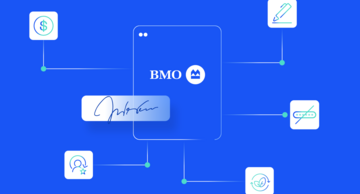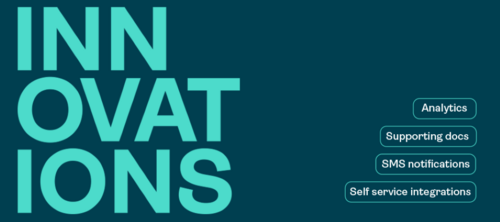Driving innovation with eSignatures: How BMO improved the digital customer experience

Bank of Montreal (BMO) was founded more than 200 years ago as Canada’s first bank. Today, it serves more than 12 million customers in North America, Europe, and Asia, focusing on three primary operating groups: Personal and Commercial banking, Wealth Management, and BMO Capital Markets.
A leader in digital innovation, BMO embarked on its digital transformation more than 10 years ago to improve the customer experience while also working toward achieving its goal of becoming completely paperless.
Partnering with OneSpan, BMO designed an enterprise center of excellence that elevated the digital customer experience and offered significant business improvements.
A digital transformation in banking processes
Everyday banking tends to be paper-heavy; it's high-volume and has a big impact on the workflow of a number of bank employees. Yet the expectation is for a seamless digital customer experience, one that enables consistency and continuity regardless of where or how they choose to engage.
Leveraging OneSpan Sign, BMO created SecureSign, a front-end application that is fully integrated with OneSpan and BMO applications. This integration enables fast and secure remote signature collection and automated storage in BMO’s digital library.
Additionally, with SecureSign, BMO can deploy reusable processes that enable faster scaling, smarter solution building, and more expedient deployment to staff, all of which manifests in greater productivity and efficiency.
By the numbers: The benefits of an eSignature solution
BMO has been steadily marching toward its goal to be paperless. To date, BMO has achieved:
- 33+ million documents stored in its digital library
- 15+ million eSigned transactions completed
- 1.7+ million signatures collected remotely
Though eliminating paper has certainly helped with cutting costs, SecureSign has also greatly simplified customer processes. Reducing physical paperwork allows BMO employees to spend more time forming human connections, further elevating its competitive advantage.
Additionally, the integration of SecureSign into BMO systems removed the need to navigate between platforms. This ultimately saves BMO employees an average of 5 minutes per transaction. This adds up quickly; with approximately 100,000 remote transactions a month across the network, it translates to about an hour saved per branch per week.
Sajjad Butt, BMO’s lead for the internal eForms and eSignature Center of Excellence (EECOE), is responsible for digital storage across all business functions, including human resources, procurement, and legal.
He explained, “Over the last three months alone, we've captured over 350,000 documents using SecureSign. Many of those are documents that would have been otherwise printed, scanned, stored, and then destroyed, so the ability to conduct the entire process electronically has helped enormously.”
Improving the customer experience and business outcomes with OneSpan Sign
BMO’s partnership with OneSpan allowed for the creation and implementation of a consistent eSignature process and a stronger digital customer experience. This helped BMO achieve better business outcomes, including increasing customer retention and meeting greater business efficiencies.









